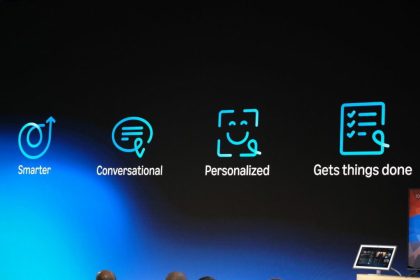Artificial intelligence technology has become an integral part of human life these days, and its very good and practical capabilities have made life easier for humans than before. The development and growth of artificial intelligence tools does not stop at all and expands dramatically every year. Although this growth has been useful for humans in various aspects, artificial intelligence, like any other technology, has risks that some profit-seeking people can use these tools to achieve their sinister thoughts. In this article, we intend to introduce you to 5 artificial intelligence technologies that hackers can exploit. Join Digikala Mag.
Using natural language artificial intelligence for phishing attacks

The ability to understand and produce human language has been one of the main goals of artificial intelligence research since its early days. This technology teaches machines the ability to understand, produce words and text in the same way as humans. In today’s world, we have various tools of this technology available, including artificial voice generation tools, capable conversational robots, text generators in different languages, and many technologies related to artificial intelligence. These artificial intelligence tools have the ability to process human language in the form of text or audio data and fully understand its correct meaning with the intention and feelings of the speaker or writer.
These statements are a great option for phishing attacks. If you don’t know about phishing attacks, we should mention that these types of attacks are based on social engineering in which profiteers or hackers deceive users into sensitive and important information such as passwords, bank card information, sensitive personal information and more. they get Using these new technologies, hackers can commit fraud en masse via email, phone calls, messaging apps, or anywhere humans communicate with each other through a system.
There are many ways to carry out phishing attacks, including fake websites, phishing by changing links, fake phone calls, phishing malware, sending fake messages and others. Sometimes, by changing the address in the address bar of the browser, hackers try to take the user to a fake website that is very similar to the original website, and by entering important information such as username and password by the user, they can easily access all his information. Hackers are placed.
Unlike normal phishing as we know it, there is another type of phishing where attempts are made against specific people with information about them specifically to normalize the scam. For example, AI technology tools can impersonate a personal boss and request an employee to deposit a sum of money into a specific bank account. By mimicking the voice of the head of a company, these tools will easily pave the way for more dangerous abuses, without the employee ever suspecting that this is a scam.
Deepfake social engineering

Social engineering is a type of hacking that targets weaknesses in the psychology of human behavior to bypass technical security measures. In other words, social engineering is actually performing a series of actions on a person or a group of persons, with the aim of persuading them to do things in order to bring the attacker to goals such as obtaining a series of specific information, access information, manipulating the target system or network. It is predetermined to do a task. For example, a hacker might contact the secretary of an important company and, while introducing himself as a cleaning worker, ask him where the company’s paper waste is disposed of. The attacker then goes to that location to look for discarded documents or other clues that they can use to create an exploit.
Deep learning systems that can simulate users’ faces and voices as closely as possible (known as deepfaking) have advanced to the point where they can be used anytime, anywhere. Hackers use deep learning, machine learning and artificial intelligence technologies to create images, videos and sounds that are convincingly real. With the passage of time and the development of technology, it will be much more difficult to distinguish fake content from real content, and for this reason, many users become victims of cyber attacks.
It is worth noting that there are services where you can send samples of your voice and then read a text to that service to make the most accurate simulation of your voice. In principle, such technology could be used to simulate anyone’s voice. Then the only thing you have to do is to communicate with the people you want through a phone call or video call and make various requests on behalf of the person whose identity you faked. Unfortunately, general users are easily deceived in this way. Meanwhile, there are services that do not allow hackers to abuse users’ voices so easily.
For example, the service “Podcastle Revoice” is one such service that claims to create a digital copy of your voice based on audio samples you send. The service has issued a statement regarding the high level of concern that users are abusing the generated sounds, saying that it has clear instructions on how to create the sounds, as well as checks to prevent potential abuse by its team. In this regard, the user must read and record live 70 separate sentences that are specifically determined by the engineers of this team. This means that the user cannot simply use someone else’s recorded voice in this context. Then these 70 recorded sentences are checked manually by the team of this service to ensure the authenticity of the person’s voice and then the voices will be processed through their artificial intelligence technology tools.

Automatic detection of security holes by artificial intelligence

It typically takes hours for users to search through the code to find, fix, or exploit security holes. But artificial intelligence tools have made it easy to do this type of work. For example, some machine learning models such as ChatGPT can both write code and detect security holes in the sent code. Also, some artificial intelligence tools are able to provide good suggestions by examining the code structure, which not only improves the overall productivity, but also saves time. While this has its benefits, it also creates the possibility that AI will be able to write malware sooner for the security holes it finds, making it easier for hackers to exploit them.
Malware that learns through machine learning

The main strength of machine learning is how it can take huge amounts of data and extract useful rules and insights from it. It is reasonable to expect that future malware will use this general concept to quickly adapt to countermeasures. This issue may create a situation where malware and anti-malware systems will effectively become machine learning systems that have a very high complexity and will not be so easy to work with.
Generative AI to create fake data

Artificial intelligence technologies can now simulate images, video, text and voice of different people simply and in the shortest possible time. These technologies have reached a point where even experts cannot easily recognize their fakeness, at least at first glance. So this means that you should expect a huge flood of fake data on the internet in the near future. For example, fake social media profiles are now easy to spot, so it’s not that hard to spot catfish scams or other campaigns to spread misinformation to an informed audience.
For those users who don’t know, a catfish scam is a type of scam where people hide their true identity and seek to achieve their nefarious purposes by creating a fake online persona. This group of people may spend a very long time building trust for users and even enter into an emotional relationship with them. However, new artificial intelligence technology tools can create fake profiles for people that are indistinguishable from their real profiles, and this is an issue that needs to be paid more attention to users.
This group of hackers usually introduce themselves to users as people with beautiful faces, very good financial status, and other things, and they have been in contact with them on social networks for some time. In order for users not to suspect them, these people create a series of fake profiles under the name of their friends or family members to make everything seem very normal and real. Then, at the right time, they cheat them on many different pretexts.
final word

Although the tools of artificial intelligence technology play a very important role in the lives of people today, there are always a series of profit-seeking people who intend to take advantage of the advancement of technology to achieve their sinister desires. What makes this new generation of AI technology different is how quickly it surpasses human abilities to recognize them. In this article, we introduced 5 artificial intelligence technology tools that hackers can exploit, to inform you a little about this. We hope you enjoyed reading this article.
Source: Howtogeek

Frequently Asked Questions
What are the advantages of artificial intelligence technology?
This technology has the ability to perform calculations faster than human speed in a wide range of problems with accurate results.
What are the disadvantages of artificial intelligence technology?
This technology, like any other technology, also has its disadvantages, the most important of which are the high cost of building artificial intelligence models, as well as the misuse of its capabilities for wrong purposes.
RCO NEWS
















